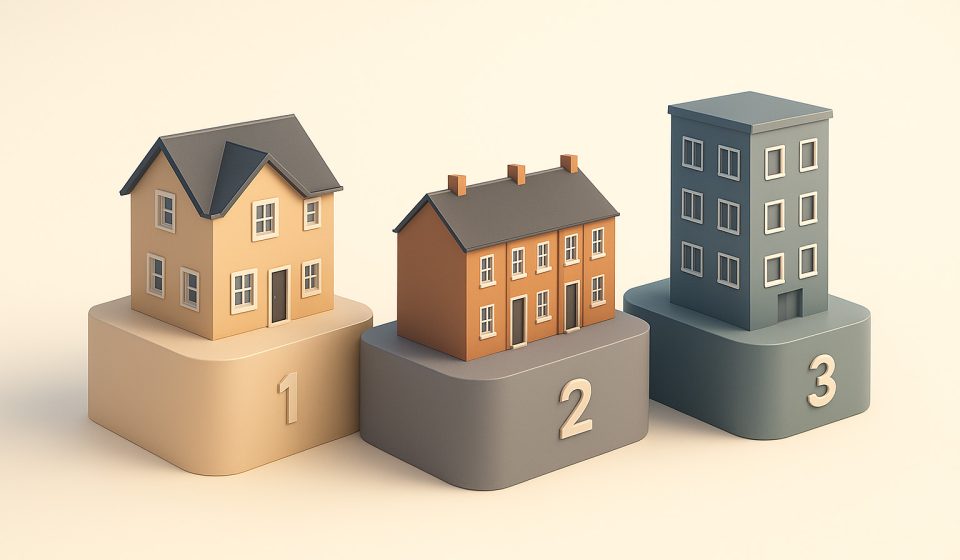The cooling UK housing market is hiding a layered story. It’s not just about postcode any more; it’s about property shape. Detached homes, terraces, and flats are on different paths in 2025. If you’re thinking of selling, buying, or simply sizing up your next move, knowing which structure is weathering the storm matters more than ever.
Table Of Content
So, which types are holding their ground? And which are quietly slipping behind?
Detached Homes: Still the Most Resilient
Detached homes are holding up best in today’s unpredictable market. Even as prices soften, these properties have clung to value-especially in outer suburbs and semi-rural spots. It’s not just about extra square footage. Buyers want privacy, land, and the rare feeling of proper ownership. Detached homes stand apart because they deliver personal space, big gardens, and real scope to extend.
| Average YoY change | -1.2% |
| Resilience factors | Family demand, owner-occupier pull, larger gardens |
| Top locations | Cheshire outskirts, Northumberland villages, South West hamlets |
In some stretched commuter belts, prices have dipped. Yet demand for bigger detached homes in desirable, lifestyle-driven locations is still robust-especially among families trading up or buyers relocating for quality of life.
Terraced Houses: Steady, But Uneven
Terraced houses-the backbone of British towns-are showing mixed results. Where they offer true affordability, values remain steady. In oversupplied or ex-rental-heavy spots, prices are slipping. Their best feature is versatility. Terraces attract everyone from first-time buyers to landlords. But the difference between a tidy terrace and a tired one is growing fast.
| Average YoY change | -2.8% |
| Resilience drivers | Walkable areas, top school zones, modern interiors |
| Underperformers | Industrial belts, dense rental zones, rundown terraces |
If your terrace sits in an up-and-coming neighbourhood, or you’re within easy reach of the city centre, you’re probably insulated from drops. Elsewhere, where properties need work or carry rental history, price cuts are creeping in.
Flats: The Weakest Link in 2025
Flats have absorbed the harshest blows this year. Dense urban blocks, especially in major cities, have seen values drop-sometimes by 5% or more. Buyers are worried about service charges, cladding issues, and the complexity of leaseholds. Flats feel temporary to many, and that’s not attractive in an anxious market.
| Average YoY change | -4.7% |
| Problem zones | East London, Birmingham towers, central Manchester blocks |
| Brighter spots | Period conversions, low-rise blocks with strong management |
University districts and stations still pull renters, but investors are backing away. Even tenants are cautious. Where once flats promised easy returns, in 2025 they’re struggling to keep pace.
What the Data Signals for the Future
This year, homes with gardens, flexible layouts, and fewer strings attached (think freehold over leasehold) are standing strong. Buyers want permanence, not compromise. The more drawbacks a property comes with, the less price power it retains. That’s reordering the UK’s housing hierarchy right before our eyes.
Final Word
Not every property is created equal in a market like this. Detached homes have proved their worth-offering lifestyle and value security. Terraces still hold promise, especially where location and condition shine. Flats? They’re finding it tough. In 2025, the type of home you own matters as much as the street it sits on. Structure is your shield-or your weak spot-in this shifting market.


